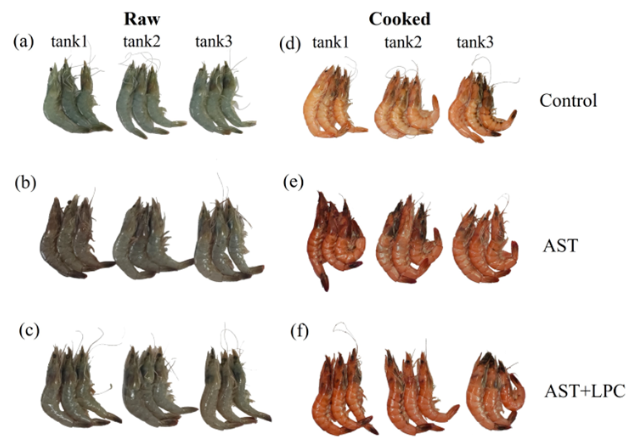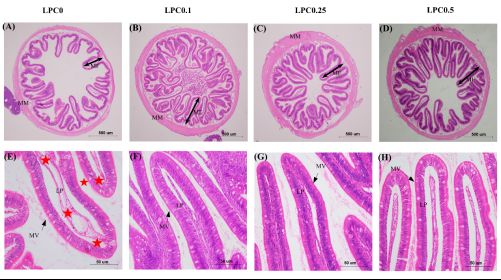 NEW
NEW
- Lysophospholipid in low-lipid diets on juvenile Pacific white shrimp.
- Efficient promotion of dietary astaxanthin uptake by lysophospholipids
- Longfeiping, senior engineer of SDIC biotechnology Investment Co., Ltd.: development and evaluation
- Wangfeixue, vice president of Fengshang Research Institute: exchange of intelligent overall solution
- Academician Michael Conson of Ocean University of China: a new way to improve feed protein efficienc
Efficient promotion of dietary astaxanthin uptake by lysophospholipids
Recently, Qingdao Kenon and the Aquatic Nutrition Feed Team of the Yellow Sea Aquaculture Research Institute, a strategic partner, found through joint research that lysophosphatidylcholine can improve the absorption of astaxanthin in feed and regulate cholesterol transport in Litopenaeus vannamei. The paper has been published online in the internationally renowned magazine Antioxints, with the title: Dietary Lysophosphatidylcholine Improves the Uptake of Astaxanthin and Modulates Cholesterol Transport in Pacific White Shrimp Litopenaeus vannamei。
Astaxanthin (AST) is an efficient antioxidant and pigment, and is currently one of the most expensive additives in salmon, trout, and certain shrimp feed.How to improve the uptake efficiency of dietary astaxanthin into farmed shrimp is of significance. As a highly efficient emulsifier, lysolecithin (LPC) has great potential to promote the absorption and deposition of astaxanthin. This study focused on the juvenile shrimp of Litopenaeus vannamei (average initial body weight: 2.4 g).Three diets were prepared: control group, the AST group (supplemented with 0.02% AST), and the AST + LPC group (supplemented with 0.02% AST and 0.1% LPC).Each diet was fed to triplicate tanks, and each tank was stocked with 30 shrimp. The shrimp were fed four times daily for eight weeks. The AST supplementation improved the growth of white shrimp, while LPC further promoted the final weight of shrimp. More importantly, the LPC supplementation significantly increased the astaxanthin deposition in the muscle. The astaxanthin content in the muscle of the AST+LPC group even reached nearly twice that of the AST group (Figure 1).

Figure 1: Muscle astaxanthin concentration of experimental shrimp (mean ± standard error). Data bars not sharing the same letter were significantly different (p < 0.05).
From the perspective of body color, whether it is fresh shrimp or cooked shrimp, adding LPC can significantly improve the yellowness of shrimp shells compared to the AST group (Figures 2 and 3). In addition, feed LPC increased the content of high-density lipoprotein cholesterol in serum, but decreased the content of low-density lipoprotein cholesterol, indicating that LPC can regulate the transport of lipids and cholesterol. In summary, supplementing with LPC can promote the deposition of feed astaxanthin in cultured shrimp, further expanding the benefits of feed astaxanthin. LPC can also independently regulate shrimp body color and cholesterol transport. This experiment is the first to study and confirm the promoting effect of LPC on the efficiency of feed astaxanthin.

Figure 2 Body color parameters of experimental shrimp (mean ± standard error). For each sampling point, data bars not sharing the same letter were significantly different (p < 0.05). a* value; b* value; L* value. The a*, b*, and L* indicate the redness (red–green), yellowness (yellow–blue), and brightness (white–black), respectively. A1 and A2 indicate the sampling points near the head and tail, respectively.

Figure 3: Photo pictures of raw and cooked shrimp fed experimental diets AST and LPC. (a) Raw—control group; (b) raw—AST group; (c) raw—AST + LPC group; (d) cooked—control group; (e)cooked—AST group; (f) cooked—AST + LPC group



